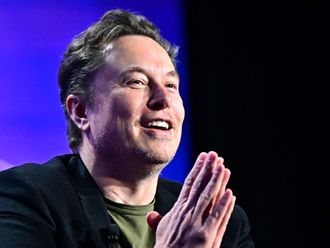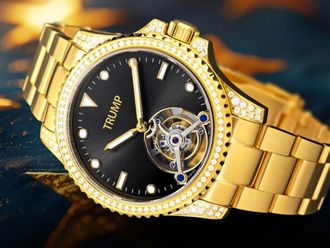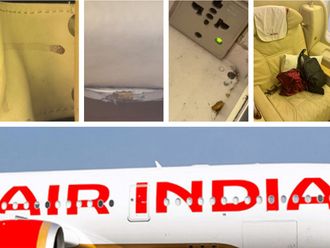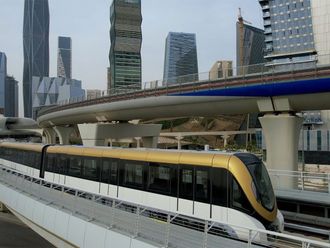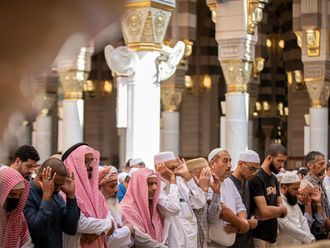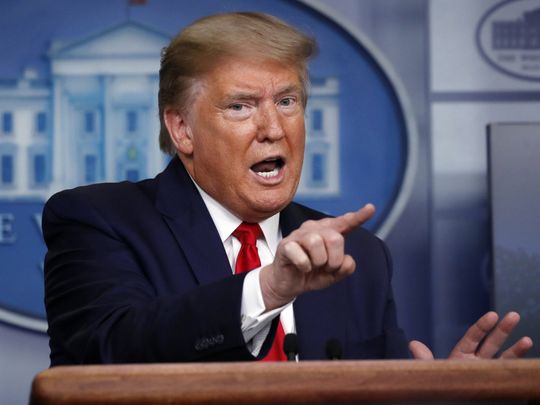
Washington: There once was a time when President Donald Trump made clear that governors were the ones mainly responsible for the fight against the coronavirus pandemic. But that was Sunday. On Monday, he declared that he was really in charge and would make the decision about when and how to reopen the country.
The president’s reversal raised profound constitutional questions about the real extent of his powers and set him once again on a potential collision course with the states. For weeks, he sought to shift blame to the governors for any failures in handling the virus, presenting himself as merely a supporting player. Now as the tide begins to turn, he is claiming the lead role.
“The president of the United States calls the shots,” he said at his evening news briefing. “They can’t do anything without the approval of the president of the United States.” Asked what provisions of the Constitution gave him the power to override the states if they wanted to remain closed, he said, “Numerous provisions,” without naming any.
“The authority of the president of the United States having to do with the subject we’re talking about is total,” Trump said.
Confusion on horizon?
The schism threatens widespread confusion if the president and governors end up at loggerheads over how and when to begin resuming some semblance of normal life in the country once the risk of the virus begins to fade sufficiently. Conflicting orders by Washington and state capitals would leave businesses and workers in the untenable position of trying to decide which level of government to listen to when it comes to reopening doors and returning to their jobs.
The shift was just the latest of many conflicting messages sent by Trump during the course of the pandemic. At various points, he has played down the seriousness of the coronavirus, then called it the most serious situation the nation has ever confronted. He has defended China for its handling of the original outbreak, and assailed China for its handling of the original outbreak. He has called for strict social distancing, then called for reopening by Easter, then called off the plan to reopen.
Just Sunday, he took aim at Dr. Anthony S. Fauci, the federal government’s top infectious disease specialist, provoking widespread concern. Hours after the doctor acknowledged that earlier action could have saved lives, Trump reposted a Twitter message that said, “Time to #FireFauci.” On Monday, the president said he would not fire Fauci and dismissed the idea that anyone would think he would do what he retweeted.
Critical moment in crisis
The tension with the governors over reopening comes at a critical moment in the crisis as national and state leaders facing the dual calamities of a deadly pandemic and a cratering economy try to calibrate when it would be safe to resume business and social life without resulting in a second wave of disease and death.
The president spent Monday assembling advisory committees with officials like Treasury Secretary Steven Mnuchin and a host of other Cabinet secretaries, as well as his eldest daughter, Ivanka Trump, and son-in-law, Jared Kushner.
Outside figures could also be seated, including investors and executives like Stephen A. Schwarzman from Blackstone, according to a person familiar with the discussions. It was unclear whether any public health officials like Fauci would be part of the new task force, which may be announced as early as Tuesday.
Trump said that he would consult with the governors, but they have made clear that they did not intend to wait for or defer to him. Seven governors from the Northeast, including one Republican, announced on Monday a joint effort to plan for a reopening while three Democratic governors from the West Coast did the same.
Jabs at governors
Even at Monday’s daily news briefing, he took further jabs at the governors. “Many of them didn’t do their jobs,” he said. “We helped some of the ones who didn’t know what they were doing.”
But the president appears interested in getting credit for the reopening, as more than 16 million people have filed for unemployment in the past few weeks.
The notion that Trump would be the one to decide about reopening struck governors as rich given that he never ordered the country closed in the first place. The decisions to shut down schools, colleges, sporting events, concerts and everyday life were made by governors, mayors and individual executives. The president remained largely on the sidelines as they moved ahead without guidance from him.
Only after New York, California and other large states ordered such actions did Trump weigh in with guidelines from the Centers for Disease Control and Prevention recommending social distancing measures - like no gatherings of 10 or more people - advice that was important in establishing a national standard, but it was not binding.
Trump initially set the guidelines for two weeks, and only after lobbying by public health officials, did he extend them to April 30. But he claimed credit on Monday for the states’ actions. “That’s because I let that happen,” he said.
The governors expressed astonishment. “You want to now say the federal government is in charge?” Gov. Andrew M. Cuomo of New York said on MSNBC. “Which by the way is a shift because the federal government didn’t close down the economy, right? They left it to the states. It was state by state, it was a whole hodgepodge, the governors had to close the economy, which was not politically easy to do, but now the federal government says it can open it? Well then, why didn’t you close it if you can open it?”
Even some sympathetic constitutional scholars said Trump could not. “There is no authority for a president to order states to ‘open up’ if the state believes that such an order would be inimical to public health,” said Jonathan Turley, a law professor at George Washington University who testified last year against impeachment in the House. “The president had no authority to order a national lockdown and certainly does not have authority to now order the lifting of such orders issued by governors.”
That does not mean that Trump’s decision on reopening the country is not meaningful. Even if he does not have direct authority to impose his will, any guidelines he issues may go a long way toward setting a standard that states and cities could follow, especially in Republican states that have taken their lead from him.
But some critics said he looked like he was debating himself at the podium. “I think the thing that’s unsettling to the public isn’t just the absence of consistent guidance,” said David Axelrod, a former adviser to President Barack Obama. “It’s the revelation that the person in charge is unsure.”
Task force
The president’s task force, according to people informed about it, will include members of the Cabinet, including Mnuchin; Wilbur L. Ross Jr., the commerce secretary; Sonny Perdue, the agriculture secretary; Elaine Chao, the transportation secretary; Dan Brouillette, the energy secretary; Eugene Scalia, the labor secretary; Ben Carson, the housing secretary; Robert Lighthizer, the trade representative; and Russell T. Vought, the acting director of the Office of Management and Budget.
The membership raised questions about how much questions of public health will figure into the president’s decision. Peter Navarro, the president’s trade adviser who is managing the manufacture of medical equipment to address the pandemic, said in an interview that the health specialists were not fully attentive to the economic costs of the shutdown.
“It’s disappointing that so many of the medical experts and pundits pontificating in the press appear tone deaf to the very significant losses of life and blows to American families that may result from an extended economic shutdown,” he said.


